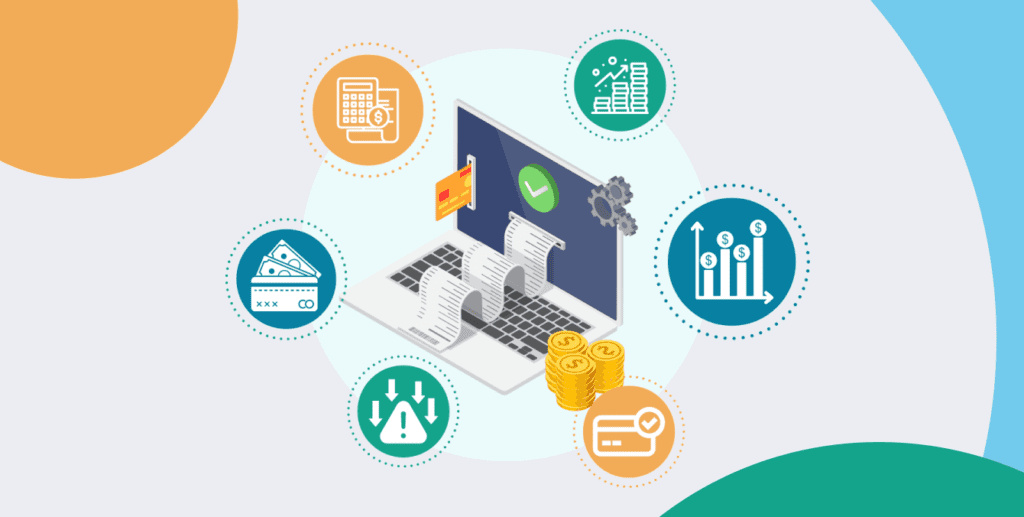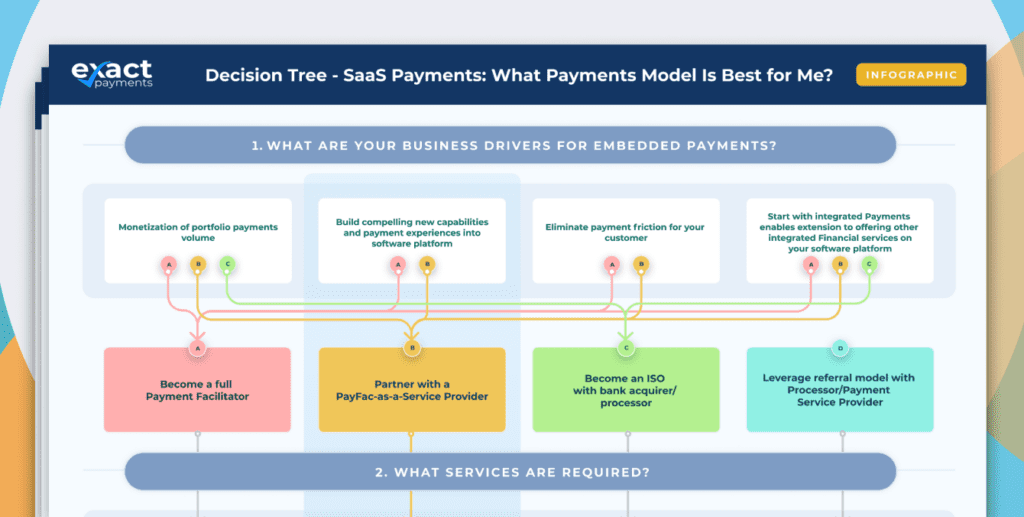6 Ways Embedded Payments Benefit B2B Accounting SaaS

Companies large and small rely on their accounting/finance, billing, cash flow, and subscription/revenue management tools to keep track and make sense of the financial metrics of their businesses.
Independent software vendors (ISVs) and software-as-a-service (SaaS) companies have carved out a healthy niche in this market. Cloud-based offerings are easy to deploy, offer data access from anywhere, feature high uptimes with no maintenance, and can scale as the business grows.
As important as financial tools are to companies, equally important is the ability to accept B2B payments within an application. Embedded payments allow your clients to accept payments from their customers without leaving the application — greatly reducing friction around billing, subscriptions, and renewals. Not to mention you’ll be able to collect a new stream of revenue from the payments processed on your platform.
Partnering with a payment facilitator-as-a-service (PFaaS) provider gives B2B billing and subscription management software companies the flexibility needed to quickly and completely integrate new payment options within the look and feel of your native application — while generating new growth. Customers will also appreciate features like a wide variety of B2B payment options, lower fees, payment automation/reconciliation, and fast onboarding. In this blog, we’ll look at these and other ways embedded payments can provide positive benefits and sustainable growth for your B2B recurring billing and subscription management SaaS.
1. Tap a new revenue stream
SaaS businesses in the B2B billing, accounting and subscription management industry have a tremendous opportunity to grow revenue. Andreessen Horowitz cites that “Every company, as we saw with Shopify and Mindbody, should be thinking about how to leverage financial services to better serve customers, better retain customers, and drive more margin.” Indeed, it is estimated that ISVs and SaaS providers have the potential to address $35 trillion in payments, or 15% of the worldwide total, by integrating B2B payments into their platforms.
2. Make accounting processes even easier for customers
As a SaaS that serves recurring revenue and subscription businesses, streamlining processes and improving customer experiences are core value propositions. Embedding payments helps you reach your goal with seamless integration of the back-office applications your clients use in their billing and accounting processes.
For example, automating the process of billing, reconciling payments, and posting data to all back-office applications is a huge value-add. Instead of downloading data from multiple solutions and aggregating it in spreadsheets, an embedded B2B payments integration saves your clients time on repetitive tasks like billing runs— and means your clients can move on to other, more important projects.
Exact Payments’ client, Ordway, has done just this. With a fully embedded payments solution, Ordway’s customers can manage and account for fund flows entirely within the billing platform. They also benefit from automated posting to accounting or ERP solutions—resulting in a 100% closed-loop order-to-cash automation that significantly reduces manual effort.
3. Create a quick and easy path to payment acceptance
No one wants to wait days or weeks to complete onboarding. A few of the larger third-party payment solutions require complicated offline applications and contracting, which can be frustrating. Any lag in onboarding translates to lost revenue and implementation delays.
Look for embedded payment solutions with a payments API so you can easily integrate with the payment providers’ online onboarding process. This way, customers can easily and directly sign up without leaving the SaaS application — without any additional steps or separate logins that can result in a poor experience for your customer.
4. Accept a wide variety of payment options
Customers want to pay using their preferred methods, and companies that offer five or more payment methods experience 5% less churn than companies that accept one to three payment methods. Additionally, up to 40% of churn can be attributed to payment failure.
Allowing customers to pay using their preferred method makes it likely they will set up a recurring payment. Besides credit cards and ACH payments, look for vendors that can process PayPal, ApplePay, GooglePay, and foreign currencies.
5. Less cost for customers; more revenue for vendors
In the B2B payments world, credit cards, specifically corporate purchasing cards, make up most transactions, second only to ACH payments. Embedded payment processors should be able to offer what is known as Level 2 and Level 3 credit card processing. Level 2 and Level 3 credit card processing require more information up front but result in lower interchange fees that vendors can keep or share with customers — or both.
Level 1 requires only basic information such as merchant name, date, and transaction amount. Level 2 adds such details as tax information, customer details, and ZIP code. Level 3 also includes such information as invoice and order numbers, ship from/to ZIP codes, item codes and descriptions, and freight and duty costs. Level 3 processing offers the lowest rate available to businesses.
6. Reduce compliance risk
Conducting financial transactions such as accepting B2B payments requires compliance with a dizzying array of standards, including the Payment Card Industry Data Security Standard (PCI-DSS), Anti-Money Laundering (AML), Know Your Customer, Know Your Business, Office of Foreign Assets Control (OFAC) regulations, Mastercard Alert To Control High-risk Merchants (MATCH) and others from credit card issuers and government agencies.
Reputable PFaaS vendors will handle these in the background, allowing SaaS companies and ISVs to improve their products and better serve their customers.
Why PFaaS makes sense for your business
Helping customers work the way they want can be a powerful lure for your products. Partnering with a payment facilitator-as-a-service (PFaaS) provider can bring the benefits of embedded payments to help drive top-line and recurring revenue.



